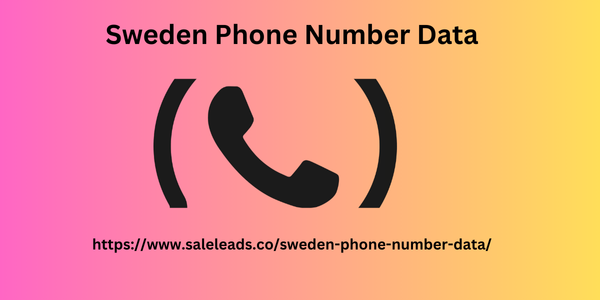|
|
In Sweden, there is a certain format for telephones in businesses, which reflects the structured nature of the telecommunications system. Mastery of this format is very important for a caller within the country or abroad so that good connectivity to the required number and conformity to the regulatory standards are achieved.
1. Standard Format
The typical standard format of Swedish numbers is usually as follows. The fixed-line numbers are formatted:
0XX-XXXXXXX (where "0XX" is the area code, and "XXXXXXX" is the subscriber number).
As an example, a Stockholm number would appear thus: 08-1234567. The "0" is the trunk prefix to be dialed for calls within Sweden, and "8" is the area code for Stockholm.
2. Cellular Telephone Numbers
Mobile phone numbers in Sweden are a bit Sweden Phone Number Data different. They usually begin with 07X-XXXXXXX where "07X" identifies the mobile operator. For example, a mobile number would look something like 070-1234567. The "07" prefix makes it quite easy for a caller to differentiate whether the number is a mobile number or a landline number.
3. International Format
To dial from abroad, Swedish phone numbers are preceded by the country code; that is, +46. When calling from outside the country, the "0" at the beginning of the area code is dropped. Thus, a landline in Stockholm would be +46 8 1234567, while a mobile one would be +46 70 1234567. This international format is really critical to make sure the calls reach Sweden correctly.

4. Business Phone Numbers
Businesses operating in Sweden can apply for special phone numbers, such as toll-free numbers, which start with 020. In such cases, the client can call without any cost. A typical example of a toll-free number would look like 020-123456.
5. Local Regulations and Compliance
These formats are to be followed by every business in order to keep it compliant with the set large local regulations by the Swedish Post and Telecom Authority, commonly known as PTS. Proper formatting helps in communication and adds to the professionalism and credibility of a business.
Conclusion
In general, formats for businesses in Sweden have certain specifications that include standard forms of representation of landlines and mobiles, international dialing conventions, and even options for toll-free numbers. Understanding and using such a format correctly is key to effective communication. This helps attain clarity and efficiency within the Swedish telecommunications landscape.
|
|